
A brass instrument is a musical instrument that produces sound by sympathetic vibration of air in a tubular resonator in sympathy with the vibration of the player's lips. Brass instruments are also called labrosones or labrophones, from Latin and Greek elements meaning 'lip' and 'sound'.

The cornet is a brass instrument similar to the trumpet but distinguished from it by its conical bore, more compact shape, and mellower tone quality. The most common cornet is a transposing instrument in B♭. There is also a soprano cornet in E♭ and cornets in A and C. All are unrelated to the Renaissance and early Baroque cornett.
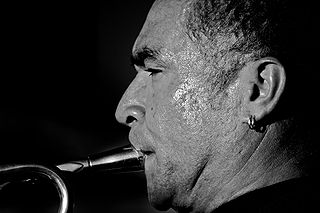
Embouchure or lipping is the use of the lips, facial muscles, tongue, and teeth in playing a wind instrument. This includes shaping the lips to the mouthpiece of a woodwind instrument or the mouthpiece of a brass instrument. The word is of French origin and is related to the root bouche, 'mouth'. Proper embouchure allows instrumentalists to play their instrument at its full range with a full, clear tone and without strain or damage to their muscles.

The trumpet is a brass instrument commonly used in classical and jazz ensembles. The trumpet group ranges from the piccolo trumpet—with the highest register in the brass family—to the bass trumpet, pitched one octave below the standard B♭ or C trumpet.
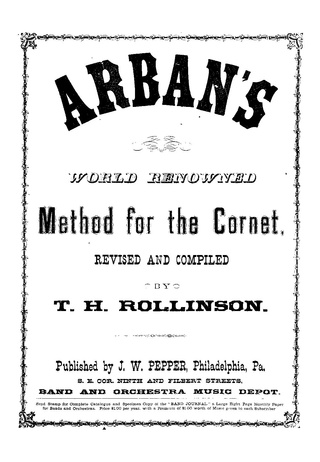
The Arban Method, titled with some variation over the years as Arban's World Renowned Method for the Cornet and Arban's Complete Celebrated Method for the Cornet, is a complete pedagogical method for students of trumpet, cornet, and other brass instruments. The original edition was written and composed by Jean-Baptiste Arban (1825-1889) and published in Paris by Léon Escudier in 1864. It has been reissued by multiple publishers, with notable revisions made by T.H. Rollinson published in 1879 by J.W. Pepper, Edwin Franko Goldman published in 1893 by Carl Fischer, and Claude Gordon published in 1982 also by Carl Fischer. It contains hundreds of exercises ranging from basic to advanced compositions, with later editions also including a selection of popular themes as solos and duets by various composers, and several original compositions by Arban including his famous arrangement of Carnival of Venice.
Tonguing is a technique used with wind instruments to enunciate notes using the tongue on the palate or the reed or mouthpiece. A silent "tee" is made when the tongue strikes the reed or roof of the mouth causing a slight breach in the air flow through the instrument. If a more soft tone is desired, the syllable "da" is preferred. The technique also works for whistling. Tonguing also refers to articulation, which is how a musician begins the note and how the note is released For wind players, articulation is commonly spoken of in terms of tonguing because the tongue is used to stop and allow air to flow in the mouth. Tonguing does not apply to non wind instruments, but articulation does apply to all instruments.

Herbert Lincoln Clarke was an American cornetist, feature soloist, bandmaster, and composer. He is considered the most prominent cornetist of his time.
In music, a method is a kind of textbook for a specified musical instrument or a selected problem of playing a certain instrument.
The "Carnival of Venice" is based on a Neapolitan folk tune called "O Mamma, Mamma Cara" and popularized by violinist and composer Niccolò Paganini, who wrote twenty variations on the original tune. He titled it "Il Carnevale Di Venezia," Op. 10. In 1829, he wrote to a friend, "The variations I've composed on the graceful Neapolitan ditty, 'O Mamma, Mamma Cara,' outshine everything. I can't describe it."

Étude Op. 10, No. 1 in C major is a study for solo piano composed by Frédéric Chopin in 1829. It was first published in 1833 in France, Germany, and England as the first piece of his Études Op. 10. This study in reach and arpeggios focuses on stretching the fingers of the right hand. The American music critic James Huneker (1857–1921) compared the "hypnotic charm" that these "dizzy acclivities and descents exercise for eye as well as ear" to the frightening staircases in Giovanni Battista Piranesi's prints of the Carceri d'invenzione. Virtuoso pianist Vladimir Horowitz, who refused to perform this étude in public, said, "For me, the most difficult one of all is the C Major, the first one, Op. 10, No. 1."

Étude Op. 10, No. 2, in A minor, is a technical study composed by Frédéric Chopin for the piano. It was preceded by a relative major key. Composed in November 1829, it was first published in 1833 in France, Germany, and England. This étude is an exercise in developing the independence of the weaker fingers of the right hand by playing rapid chromatic scale figures with the third, fourth, and fifth fingers of the right hand. Meanwhile, the first two fingers of the right and the left hand play an accompaniment of short intervals and single notes. Chopin indicated the fingering himself note by note for almost 800 notes.
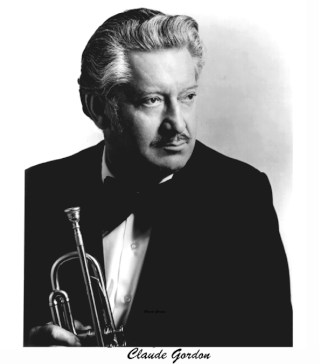
Claude Eugene Gordon, nicknamed the "King of Brass", was an American trumpet player, band director, educator, lecturer and writer.
Karl Wilhelm Brandt was a German-Russian trumpeter, pedagogue, and composer. He is the founder of the Russian trumpet school.

Flora Edna White, known professionally as Edna White and privately for much of her life as Edna White Chandler, was an American trumpet soloist, chamber musician, vaudeville performer, and composer. A child prodigy, White began her professional career as a soloist in 1901 at the age of eight and graduated from the Institute of Musical Art in 1907. White, who switched from cornet to trumpet during her studies at the institute, was one of the first soloists to perform on trumpet rather than cornet.
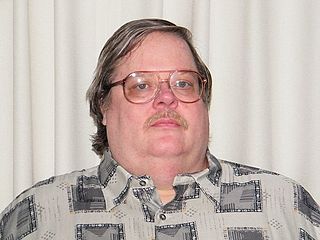
Clint “Pops” McLaughlin is an American trumpet player, teacher and writer. He has two degrees in music by the Texas Tech and The University of Texas System. He was taught mainly by trumpet player Don Jacoby.
Alan Raph was an American bass trombonist, composer, arranger, and conductor who founded and conducted the Danbury Brass Band. He recorded with many well-known musicians including Quincy Jones, Philip Glass, Peter Nero, John Pizzarelli and Bob Brookmeyer for television, movies, and ballet. He was for many years on first call with most New York City recording studios.
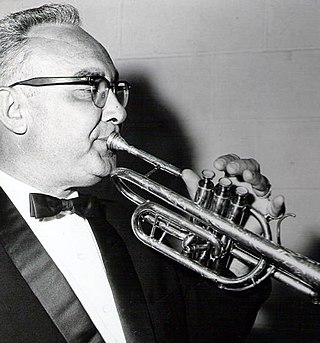
James Francis Burke was an American cornet soloist. He was the principal cornet soloist with the Goldman Band from 1943 to 1974. He was also the principal trumpet with The Baltimore Symphony Orchestra from 1943 to 1949. Mr. Burke, who had the use of only one arm, was considered the greatest virtuoso of his time on the instrument, according to Ainslee Cox, conductor of the Guggenheim Memorial Band.
Harvey Samuel Whistler Jr. was an American violinist, editor, arranger, and composer of educational music studies for studio, homogenous, and heterogeneous class instrumental instruction. In all, Whistler and colleagues published around 83 known educational music collections and methods for instrumental ensembles. Among his best known works are his violin and viola etude books, "Introducing the Positions," "Preparing for Kreutzer," "From Violin to Viola," and "Developing Double Stops" all of which were published by the Rubank, Inc. music publishing company, and are still available through the Hal Leonard Co.
Max Schlossberg was a Jewish-Baltic trumpeter, conductor, composer, and teacher. His legacy is a large number of successful trumpet students and the method book, Daily Drills and Technical Studies.












